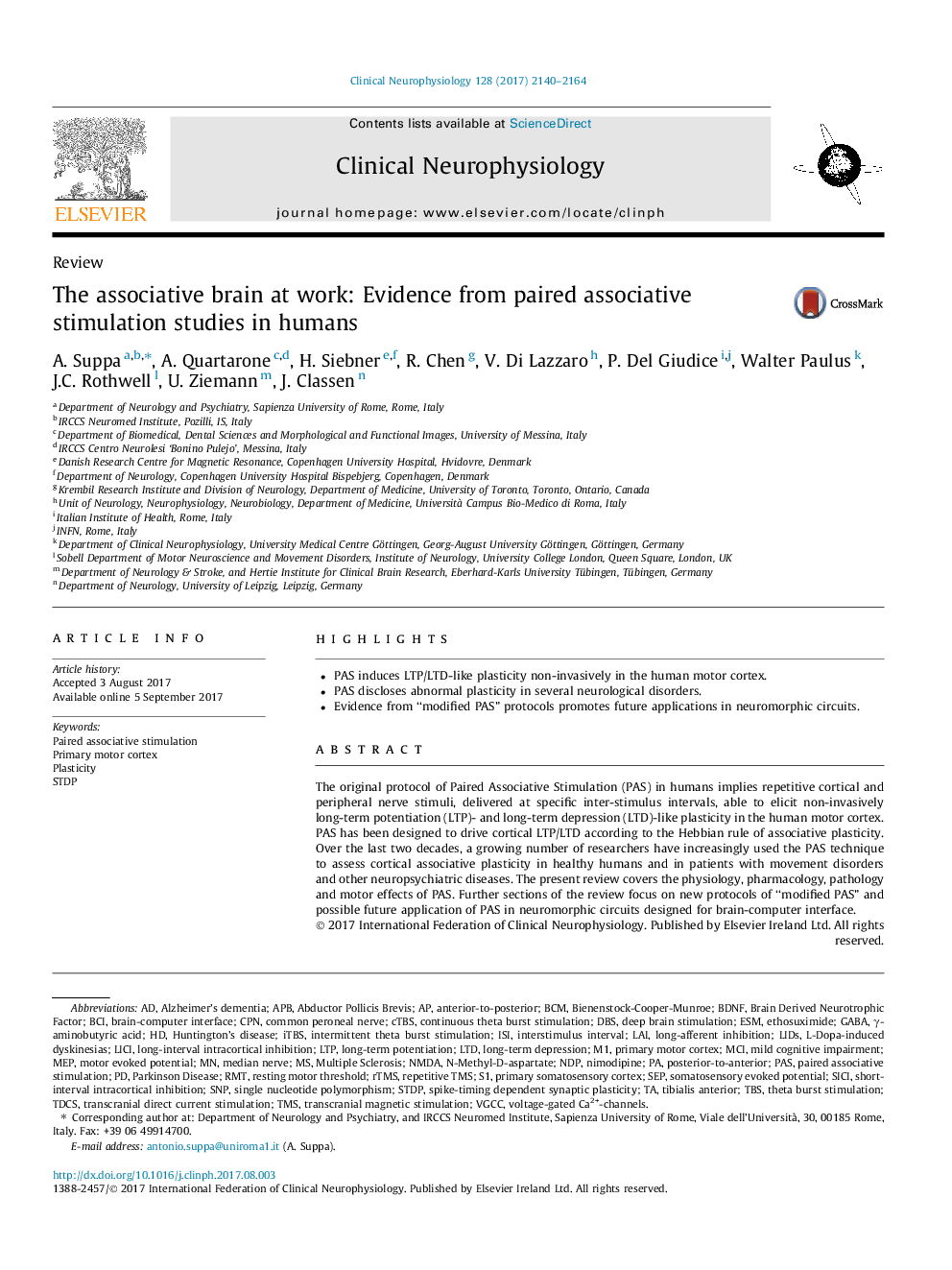| Article ID | Journal | Published Year | Pages | File Type |
|---|---|---|---|---|
| 5627583 | Clinical Neurophysiology | 2017 | 25 Pages |
â¢PAS induces LTP/LTD-like plasticity non-invasively in the human motor cortex.â¢PAS discloses abnormal plasticity in several neurological disorders.â¢Evidence from “modified PAS” protocols promotes future applications in neuromorphic circuits.
The original protocol of Paired Associative Stimulation (PAS) in humans implies repetitive cortical and peripheral nerve stimuli, delivered at specific inter-stimulus intervals, able to elicit non-invasively long-term potentiation (LTP)- and long-term depression (LTD)-like plasticity in the human motor cortex. PAS has been designed to drive cortical LTP/LTD according to the Hebbian rule of associative plasticity. Over the last two decades, a growing number of researchers have increasingly used the PAS technique to assess cortical associative plasticity in healthy humans and in patients with movement disorders and other neuropsychiatric diseases. The present review covers the physiology, pharmacology, pathology and motor effects of PAS. Further sections of the review focus on new protocols of “modified PAS” and possible future application of PAS in neuromorphic circuits designed for brain-computer interface.
